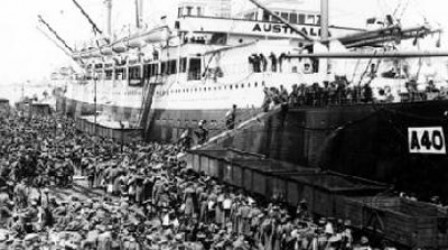COOKE Herbert William
-
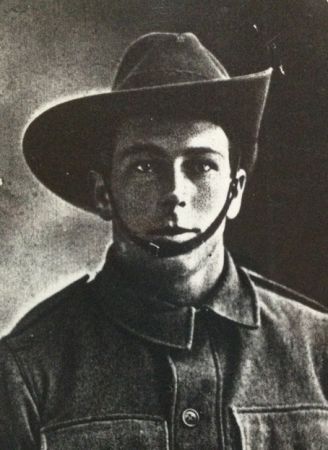
- 425
- Private
- 15 Battalion
- Eumundi
- Yes
- 17 October1 1893
- Dundathu (near Maryborough, Queensland)
- 23 September 1914
- HMAT A40 Ceramic
- 22 December 1914
- Melbourne
-
Fifty days after war was declared, Herbert William Cooke enlisted at the recruiting drive at the Exhibition Grounds, Brisbane on 23 September, 1914. He was assigned to the 4th Infantry Brigade, 15th Battalion (Service No 425) and preceded to Bowen Park for 10 days and then the men were sent to Enoggera where they started training in earnest. As part of a toughening up process on the 5th November the men were marched to Sandgate where they camped the night and after breakfast they returned to Enoggera marching back in intense heat.
Herbert was born on the 17th October, 1893 in the town of Dundatha, north of Maryborough on the Mary River. He was the fourth child of George Henry Cooke and Margaret Eleanor Vickers who were married on the 5th January, 1885. His mother passed away at Logan on the 4th September, 1910, the same day she gave birth to her ninth child, Alfred. His other siblings were Alice Constance (1886), George Henry (1887), Arthur Vincent (1890), Isabella (1894), Albert Edward (1897), Edward Stanley (1900), and Ivy Lilian (1904). At the time of his wifes death George was headmaster at Logan State School.
On 22nd October, 1910, five weeks after his wifes death, George married Elizabeth Abraham, the widow of Jabez Abraham also a teacher, who had died in 1908. The family now numbered 17 children and in January, 1911, George and Elizabeth moved the family to Eumundi where he took up the post of Head Teacher at the local state school. This remarkable family made a huge contribution to the war effort with eight of their sons enlisting in the army including Herbert William. Three died and did not return to Australia.
Eric Abraham who lived to the age of 104 and was the last of the Dungaree Diggers Cyril Frank Abraham Died of pneumonia 20 October, 1918 in France Leonard Abraham Jabez Abraham Died of tenanus and multiple shrapnel wounds on 21 August, 1916 Gilbert Harry Abraham William Ernest Cooke Albert Edward Cooke
At the time of his enlistment Herbert was a labourer living at Cedar Creek, Beenleigh and was 56½ (169 cms) tall and weighed 138 lbs. (62 kgs). His father wrote to the army on 14 September 1914 giving permission for his son to enlist. His request that his son be attached to a Light Horse Regiment, due to his connection for some time with western life, fell on deaf ears and he was assigned to the 15th Infantry Battalion. By October, 1914, the battalion still had no vehicles or harness however rifles, bayonets and uniforms had arrived. The uniforms were not issued to the recruits, however, resulting in the men wearing simple dungarees. Men who had previous experience were appointed non-commissioned officers as nearly 85% of the recruits were inexperienced and never was this more evident than on the firing range, where seven rifle club experts were secured for coaching. Over the next couple of months the men responded to the intense training and Herbert was assigned to C Company which consisted of men from the Wide Bay and Maryborough districts.
After a three day journey, the battalion arrived in Melbourne to rain and a very muddy camp. On the 21st December, Herbert commented that the camp was still muddy and raining again; had already made several trips into Melbourne on leave. Here a typical days menu for the camp was stew, an egg and tea for breakfast, no mention of lunch, and boiled meat, cabbage and potatoes for dinner.
On 22nd December, 1914 the battalion was marched to Broadmeadows Station and left by two special trains to Port Melbourne where they boarded the HMAT A40 Ceramic, a White Star liner. They steamed out of Melbourne at 2pm bound for Albany, Western Australia where the ship would join the fleet of transports heading for Europe. Owing to the lack of deck space, the training of the troops at sea was difficult. However, four times a day parades were held with instruction in musketry, physical training and rifle exercises. Herbert suffered from sea sickness in the Great Australian Bight however he was well enough to attend Church Parade on Christmas Day, 1914 and enjoyed a Christmas meal of cold pork, potatoes, haricot beans and tough plum pudding.
Apart from the physical training, the men were occupied by lectures from officers on
- the duties of guards and sentries - use and advantages of machine guns - infantry attacking and defence - marching and discipline of marches - mapping of country/terrain, - sanitation - conducting troops in warfare - the duties of outpost and - physical drills.
Church parades were also held on Sundays for all denominations and all companies were given fatigue duties such as working in the bakery and cleaning the decks of the ship.
Herbert caught influenza on New Years Day and needed medical attention for his condition. It kept him unwell for several days. One soldier died during this period. However, he was well enough to have a scruff with a Private Parker and made arrangements to fight later but Pvt Parker squashed the fight. Several men were also disciplined for gambling which was strictly prohibited. The sighting of ships, whales and numerous flying fish took the mens interest.
Finally on 20th January, 1915 the Ceramic entered Aden Harbour in what is today, Yemen. The harbour had many ships anchored including the Empress of Russia a liner that had been requisitioned by the British Admiralty and armed for active service. As well there were many native craft and before long they had thrown their lines on board and the natives were trading with the troops much to their amusement and delight. The weather was calm and very hot. On the 30th January the convoy moved single file into the Suez Canal. Priority was given to the troop convoy and emigrant ships such as Orsova and others had to wait for them to pass.
News reached the troops that the Turks were marching on the Canal and one man was shot on the bridge of the ship when passing through the canal. Barricades were erected to protect the men from sharp shooters. Indian and New Zealand troops were heavily entrenched and protected by barb wire entanglements along the canal. The Indians gave a rousing welcome to the ships as they passed. On 31st January they arrived at Port Said which was a much busier harbour than Aden. The local French population were delighted to see the Australians. The men were excited to see hydroplanes buzzing around them in the air and also American Dreadnoughts that were carrying refugees from Palestine.
The troops were anxious to disembark; they had heard of heavy fighting on the Suez Canal, however, bad weather prevented their disembarkation until 3rd February at Alexandria. There was a close call with the Ceramic breaking three lines, and she was she was nearly blown onto the Eastville. The next day they landed and loaded their kit bags onto trucks with some kit bags having disappeared from the hold during the trip. Police had difficulty keeping the Egyptians from the gangway and before disembarking the men had been warned not to drink the water, alcohol or not to seek the comfort of local woman as venereal disease was very prevalent. The battalion travelled to Cairo by train arriving the next day.
From 3rd February until 5th April, 1915 the battalion camped at Aerodrome Camp, Heliopolis and was trained in battalion, brigade and divisional fighting. Despite the warnings given to the men, many succumbed to the temptations of Cairo and charges of drunkenness and absent without leave were plentiful as well as admissions to hospital for venereal disease. The 15th Battalion left Alexandria on the transport ships Australind and Seang Bee bound for Lemnos Island. The Seang Bee arrived at Lemnos on the 14th April. The troops were trained in disembarkation of the ship into cutters and horseboats until the 24th April. On the 25th April the Australind with headquarters staff, B & D Companies reached the entrance to the Dardanelles and witnessed the landing and bombardment of the landing British troops. The Seang Bee anchored at about 4.00 pm opposite the disembarkation point and, at 4.30 pm a destroyer took off 2 companies, however, they were not landed until 10.30 pm. While waiting the destroyer came under fire from shrapnel and four men were hit.
At 9.00 am, on the 26th April, the day after the rest of the battalion, the remainder of the 15th Battalion were at Anzac Cove. The men of C Company were commanded by Captain Hugh Quinn and were ordered to support the right of the 3rd Brigade. The company was involved in skirmishing over the next two days and were mainly engaged in digging a communication trench up the valley. On the 29th April, Quinn was ordered to hold a position at the head of Monash Valley which rose abruptly to about 150 ft (46 metres) above the valley floor. This position was the only possible defence of the main supply route from the beach and was exposed on two sides and the rear and sometimes the front lines were only 10 yards (9 metres) apart. The position became known as Quinns Post and was considered one of the most dangerous territories held by Australian troops in any war.
It can be assumed that Herbert Cooke would have been involved in this fighting and he was reported killed in action on the 30th April, four days after landing at Anzac Cove. He suffered a head wound and was buried on the side of a hill to the right of the landing place at Gaba Tepe by Rev J Green with his resting place marked with a wooden cross. This buriel site was to become known as the Beach Cemetery overlooking the Agean Sea. The renowned digger John Simpson Kirkpatrick, famous for carrying the wounded down to the beach on a donkey from the battlefield, is buried just a few graves away from Herberts.
Amongst all the madness and chaos of Gallipoli somehow the army was able to locate and dispatch the belongings of soldiers back to Australia to their loved ones. On the 17th March, 1916, Thomas Cook and Sons sent Herberts meagre belongings from Egypt on board HMAT A71 Nestor back to his father in Eumundi. These included:
- a diary (copy donated to the Australian War Memorial, Private Records) - a charm - post cards - letters - wallet - disc
In 1967 his brother, Albert, applied to the Department of Defence for Herberts Anzac commemorative medallion and badge however his older brother, George, had made a prior application with the medallion being approved to be sent to George. Both men at this time were in their 80s and George believed that he was the sole remaining relative of the family.
Herbert Cookes supreme sacrifice at Gallipoli is marked with a remembrance tree planted in the township of Eumundi.
- Gallipoli
-
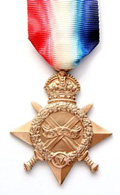
-
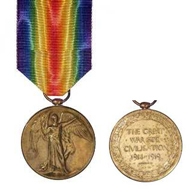
-
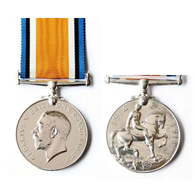
- Killed in action
- Did not return
- 30 April 1915
- Gallipoli
- 22
- Beach Cemetery, Gallipoli, Plot 1, Row A, Grave 10
-
Eumundi & District Roll of Honour Board, Eumundi Memorial School of Arts Hall, Memorial Drive, Eumundi
Maroochy Shire Honor Roll, Shire Chambers, Bury Street, Nambour
Nambour (Maroochy Shire) Roll of Honor Scroll, Private Collection, Nambour (this scroll was available for sale to the public after the war)
Maroochy Shire War Dead, Quota Park, Matthew Street, Nambour
Memorial Tablet, Eumundi Museum, Memorial Drive, Eumundi
Obituary in The Chronicle 4 June 1915, p5. Can view via Link from "Research Websites" page on this site. (Chrissy)
-
- Abraham & Cooke Newspaper Article Brisbane Courier Mail.pdf Hits: 179 Size: 507 Kb
-
http://recordsearch.naa.gov.au/scripts/Imagine.asp?B=3401888 - Service Record
http://www.qld.gov.au/law/births-deaths-marriages-and-divorces/family-history-research/ - Family history of births, deaths and marriages
Australian War Memorial Research Centre Private Records - PR84/273 - Diary of HW Cooke kept from recruitment until February, 1915 (Returned with his private belongings to his father) - CD copy purchased by researcher and donated to Eumundi Museum
http://www.awm.gov.au/collection/records/awm4subclass.asp?levelID+1716
Australian War Memorial Collection Records First World War Diaries - AWM44, Sub-class 23/32 - September 1914 to April, 1915
www.adb.awu.edu.au/lifesummary/quinn-hugh-8142Images:
www.ancestry.com - HW Cooke and Cooke family photo (Baumann family tree)
https://www.awm.gov.au/collection/C02479/ - photo of church parade of 9th Battalion at Enoggera Camp where Herbert Cooke was trained
http://www.adoptadigger.org/gallery/colour-patches/colour-patches?page=2&catpage=1#category - Colour Patch 15th Battalion
http://www.awm.gov.au/collection/A02745/ - photo of 15th Battalion marching along Collins Street, Melbourne before embarkation
http://www.awm.gov.au/collection/H19500/ - Photo of troops waiting to board A40 "Ceramic" in Melbourne
Photo of Aerodrome Camp, Heliopolis, Egypt
http://www.awm.gov.au/collection/PS1388C/ - Photo of Cairo tram loaded with diggers on leave
http://enc.slq.qld.gov.au/slq/neg/research/082000/82596r.jpg - photo of troopship "Seang Bee"
http://www.awm.gov.au/collection/P03725.009 - photo of Anzac troops practicing their Gallipoli landing at Mudros, Greece
http://www.awm.gov.au/collection/H15473/ - Photo of troops at Anzac Cove on 26 April, 1915
http://www.awm.gov.au/collection/A03802/ - Photo of Monash Valley with Quinn's Post on the left
www.google.com.au/images - Photo of Beach Cemetery, Gallipoli
War grave photo courtesy of Australian War Graves Photographic Archive. - Yvonne Atkinson











